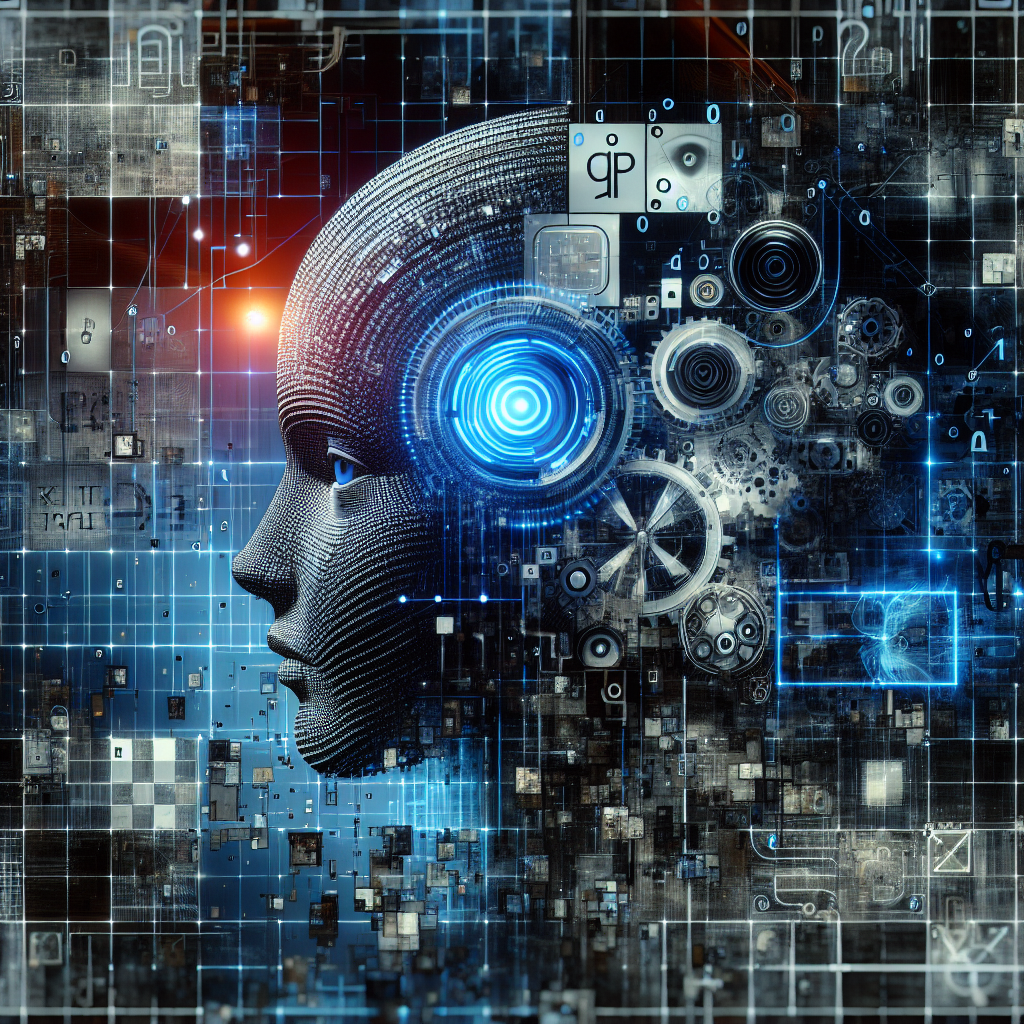AI, or artificial intelligence, is a technology that has rapidly infiltrated various aspects of our lives. From personal voice assistants to self-driving cars, AI has become increasingly intertwined with our daily routines. But in the midst of its widespread adoption, a question arises – does AI make mistakes? As we rely more on machines to perform tasks traditionally done by humans, it’s crucial to understand the limitations and potential errors that AI systems may encounter. Let’s explore the intriguing world of AI and uncover whether these intelligent machines are prone to missteps.

What is AI?
Definition of AI
AI, or Artificial Intelligence, refers to the development of intelligent machines and computer systems that can perform tasks that would typically require human intelligence. It involves the creation of algorithms and models that allow machines to analyze, interpret, and respond to data, making decisions or predictions based on that information.
Types of AI
There are different types of AI, each with its own capabilities and applications. These include:
-
Narrow AI: Also known as weak AI, this type of AI is designed for specific tasks and is limited in its scope. Examples include voice assistants like Siri and Alexa, which can understand and respond to specific commands but lack general intelligence.
-
General AI: Also referred to as strong AI, this type of AI is more advanced and can exhibit human-like intelligence across various domains. General AI can perform tasks that require understanding, reasoning, and learning, similar to how humans would approach them.
-
Machine Learning: This subset of AI focuses on training algorithms to learn from data and improve performance over time. Machine learning algorithms can analyze large volumes of information and identify patterns or make predictions based on those patterns.
-
Deep Learning: Deep learning is a subfield of machine learning that uses neural networks to process and analyze data. It is particularly effective at recognizing and interpreting complex patterns, making it well-suited for tasks such as image or speech recognition.
Applications of AI
AI has a wide range of applications across various industries and sectors. Some of the notable applications of AI include:
-
Healthcare: AI can assist in medical diagnosis, drug discovery, and personalized treatments, leading to improved patient outcomes and more efficient healthcare delivery.
-
Finance: AI algorithms can analyze financial data, detect fraud, and make predictions on market trends, allowing for more accurate risk assessment and investment decisions.
-
Transportation: AI is driving advancements in autonomous vehicles, optimizing traffic flow, and improving logistics and supply chain management.
-
Customer Service: AI-powered chatbots and virtual assistants can handle customer queries, provide personalized recommendations, and streamline customer support processes.
-
Education: AI can enhance personalized learning experiences through adaptive learning platforms, intelligent tutoring systems, and automated grading and feedback mechanisms.
-
Manufacturing: AI can optimize manufacturing processes, predict maintenance needs, and improve product quality through real-time monitoring and analytics.
The Accuracy of AI
AI’s ability to process vast amounts of data
One of the key strengths of AI is its ability to process and analyze massive amounts of data quickly and efficiently. Unlike humans, AI systems can sift through terabytes of information in a fraction of the time, enabling them to identify underlying patterns or correlations that may not be apparent to human observers. This capability allows AI models to make more accurate and data-driven decisions.
AI’s lack of human bias
Another advantage of AI is its potential to reduce human bias in decision-making processes. Humans are susceptible to cognitive biases and can be influenced by personal opinions, prejudices, or societal norms. AI, on the other hand, can operate without such biases, relying solely on data and algorithms to make impartial decisions. This can lead to more fair and equitable outcomes in various domains, such as hiring, loan approvals, or criminal justice.
The impact of data quality on AI accuracy
While AI systems excel at processing large volumes of data, their accuracy is heavily dependent on the quality of the data they are trained on. High-quality and diverse datasets are essential for training AI models effectively. If the data used to train an AI system is biased, incomplete, or of low quality, it may result in inaccurate or unreliable predictions. Therefore, ensuring data quality and integrity is crucial for maintaining the accuracy and reliability of AI applications.
Common Mistakes Made by AI
Misinterpretation of data
Despite their processing power, AI systems can still misinterpret data, leading to incorrect conclusions or decisions. This can occur when the data used to train the AI model is ambiguous, contradictory, or lacking in context. For example, an AI system analyzing customer feedback may misinterpret sarcasm or irony, leading to inappropriate responses or actions.
Errors in training datasets
AI models learn from training datasets, and if those datasets contain errors, the model’s accuracy can be compromised. Data labeling mistakes, incomplete data entries, or bias in the training data can introduce errors into the AI model, resulting in inaccurate predictions or decisions. It is crucial to thoroughly review and validate the training datasets to minimize such errors.
Insufficient or inadequate data
AI models require sufficient and representative data to generalize and make accurate predictions. If there is a lack of data or an imbalance in the distribution of relevant features, the AI model may struggle to make accurate predictions. For instance, in healthcare, if an AI model for diagnosing rare diseases is trained on primarily common conditions, it may not perform well when faced with rare cases.
Lack of context awareness
AI systems lack common sense and context awareness that humans possess naturally. They rely solely on the data they have been trained on and may struggle to understand nuances or interpret information outside their training domain. This limitation can lead to mistakes or misinterpretation of data in real-world situations that fall outside the model’s scope.
Inability to handle rare or novel situations
AI models are often designed to handle common scenarios or patterns found in the training data. However, they may falter when faced with rare or novel situations that deviate from the norm. For example, an AI-driven recommendation system for online shopping may struggle to suggest appropriate products for a unique or unconventional purchase request, as it lacks previous exposure to such cases.
Factors Influencing AI Mistakes
Data quality and quantity
The quality and quantity of data used to train AI models significantly impact their performance and accuracy. Models trained on diverse, comprehensive, and unbiased datasets tend to be more reliable. Insufficient or poor-quality data can lead to erroneous conclusions or predictions, undermining the accuracy of the AI system.
Algorithm design and implementation
The choice of algorithms and their implementation can also influence the accuracy of AI systems. Different algorithms have varying capabilities, strengths, and weaknesses. Selecting the most appropriate algorithm for a specific task is crucial to ensure accurate results. Additionally, the implementation of algorithms needs to be done correctly, taking into account various factors such as parameter tuning, model architecture, and regularization techniques to optimize performance.
Training methodologies and techniques
The process of training AI models involves various methodologies and techniques, such as data sampling, feature selection, and model optimization. The selection of the training methodology can impact the model’s ability to generalize and make accurate predictions. The use of appropriate techniques, such as cross-validation or regularization, can help mitigate overfitting and improve the model’s reliability.
Preprocessing and feature selection
Preprocessing steps, such as data cleaning, normalization, or feature engineering, play a critical role in ensuring accurate and reliable AI outcomes. Incorrect or inadequate preprocessing can introduce noise or distortions into the data, leading to inaccurate predictions. Similarly, feature selection is essential to identify the most relevant and informative features that should be considered by the AI model.
Model complexity and interpretability
The complexity of AI models can affect their accuracy and interpretability. Highly complex models, such as deep neural networks, may achieve high accuracy but can be challenging to interpret or explain. Simpler models, on the other hand, may be more interpretable but may sacrifice accuracy. Striking the right balance between model complexity and interpretability is crucial, depending on the specific requirements and constraints of the application.

Ethical Considerations
AI’s potential impact on privacy
The increasing use of AI raises concerns about privacy and data protection. AI systems often require access to vast amounts of personal data to make accurate predictions, such as in healthcare or targeted advertising. Ensuring the proper handling and safeguarding of sensitive information is crucial to protect individuals’ privacy and prevent misuse of data.
AI’s role in perpetuating biases
AI models are only as unbiased as the data they are trained on. If the training data contains biases, the AI system may perpetuate those biases, resulting in discriminatory or unfair outcomes. For instance, biased hiring algorithms may perpetuate gender or racial biases in the recruitment process. It is essential to regularly evaluate and mitigate biases in AI systems to ensure fairness and avoid social or ethical injustices.
Accountability and transparency in AI decisions
AI systems can make decisions or recommendations that have significant consequences for individuals or society. However, AI systems often lack transparency, making it challenging to understand how they arrived at a particular decision. Ensuring accountability and transparency in AI decision-making is crucial to build trust and allow for proper scrutiny or redress in cases of errors, biases, or unethical outcomes.
The responsibility of AI developers and users
Developers and users of AI systems have a shared responsibility to ensure the ethical use and deployment of AI technology. Developers should follow ethical guidelines and best practices in designing, training, and validating AI models. Users, on the other hand, should be aware of the limitations and potential biases of AI systems and exercise critical judgment when interpreting and acting upon AI-generated outputs.
Examples of AI Mistakes
Autonomous vehicle accidents
Autonomous vehicles rely on AI algorithms to navigate the roads, interpret traffic situations, and make driving decisions. However, there have been instances where autonomous vehicles have been involved in accidents due to AI mistakes. These accidents highlight the challenges of handling unexpected scenarios, such as encountering unusual road conditions or making split-second decisions in complex traffic situations.
Inaccurate facial recognition
Facial recognition technology powered by AI algorithms has faced scrutiny for its inaccuracies and biases. In some cases, AI-powered facial recognition systems have misidentified individuals, leading to potential misidentification in law enforcement or security applications. These errors underscore the importance of addressing biases and ensuring accuracy in AI-driven facial recognition technologies.
Misclassification of data
AI systems can sometimes misclassify or mislabel data, leading to incorrect predictions or actions. For example, an AI-powered spam email filter may wrongly categorize legitimate emails as spam, causing inconvenience for users. Misclassification errors highlight the need for continuous monitoring and improvement of AI models to minimize such mistakes.
Incorrect predictions in healthcare
AI-driven prediction models in healthcare aim to assist in diagnosing diseases or predicting patient outcomes. However, these models are not infallible and can make errors in predicting complex medical conditions. Such mistakes emphasize the need for careful validation, ongoing monitoring, and collaboration between AI systems and healthcare professionals to ensure accurate and reliable healthcare decisions.
Mitigating AI Mistakes
Improving data quality and diversity
Enhancing the quality and diversity of training data is crucial to minimize AI mistakes. This includes rigorous data curation, proper labeling, and validation processes. Data augmentation techniques can also be employed to generate additional training examples. By ensuring high-quality and diverse data, AI models can learn robust representations and make more accurate predictions.
Enhancing model interpretability
The interpretability of AI models can help identify and rectify potential mistakes. Techniques such as incorporating explainable AI methods and visualizations can help humans understand and verify the decision-making process of AI systems. Interpretable models can foster trust, facilitate error detection, and provide insights into potential limitations or biases.
Regular model retraining and updating
AI models should be regularly retrained or updated to adapt to changing data distributions or evolving circumstances. Continuous learning and model refinement ensure that AI systems stay accurate and reliable over time. Regular retraining can also help mitigate the impact of data drift or concept drift, where the underlying patterns change over time.
Human oversight and intervention
Human oversight and intervention can play a crucial role in rectifying AI mistakes. Humans can provide context, evaluate decisions, and detect potential errors that AI systems may miss. Enabling human reviewers or experts to review and audit AI-generated outputs can help identify and rectify mistakes, ensuring the accuracy and safety of AI applications.
Ethical guidelines and regulations
Implementing ethical guidelines and regulations can help mitigate AI mistakes and ensure responsible AI development and deployment. Governments, associations, and industry bodies can establish guidelines and standards for AI systems, outlining best practices, promoting fairness, and mitigating potential risks. By adhering to ethical guidelines and regulations, AI developers and users can foster trust and accountability in the AI ecosystem.
Addressing the Fear of AI Mistakes
Education and awareness about AI limitations
Fostering education and awareness about the limitations and capabilities of AI is vital to combat fears and misconceptions surrounding AI mistakes. Educating the public, policymakers, and stakeholders about how AI functions, its potential benefits, and its inherent limitations can help manage expectations and promote informed decision-making.
Building trust through explainability
The lack of transparency in AI decision-making can contribute to mistrust and fear of AI mistakes. By embracing explainable AI approaches, developers can provide clear explanations and justifications for AI-generated outputs. Transparent AI systems can help build trust by allowing users to understand how decisions are arrived at and enabling them to verify the reasoning.
Balancing human judgment and AI capabilities
Recognizing that AI systems are tools that augment human capabilities rather than replacing them is important. Understanding that human judgment and expertise can complement AI capabilities helps address the fear of AI mistakes. By combining the strengths of humans and AI, a collaborative approach can be fostered, promoting better decision-making and accuracy.
Long-term collaboration between humans and AI
Creating a conducive environment for long-term collaboration between humans and AI is essential. Encouraging partnerships between AI developers, users, and domain experts can lead to iterative improvements, addressing potential mistakes and refining AI systems. By engaging in ongoing collaboration, humans can learn from AI outputs, and AI can benefit from human corrections and insights.
Future Perspectives
Advancements in AI technology
The field of AI continues to evolve rapidly, with advancements in algorithms, computational power, and data availability. As technology progresses, AI systems are expected to become more accurate, reliable, and capable of handling complex tasks. Continued research and development in AI technology hold the promise of further reducing the occurrence of mistakes and enhancing overall performance.
Ethical and regulatory developments
Ethical considerations and regulations surrounding AI are expected to evolve alongside technological advancements. The development of ethical frameworks, guidelines, and regulations will play a crucial role in mitigating AI mistakes and ensuring responsible AI deployment. Striking the right balance between technological innovations and ethical safeguards is paramount to harnessing the full potential of AI.
Societal acceptance of AI mistakes
As AI becomes more prevalent in various domains, the acceptance and understanding of AI mistakes will likely increase. Just as humans make errors, it is inevitable that AI systems will occasionally make mistakes. Building a culture that recognizes the fallibility of AI and encourages learning from mistakes can help develop resilient AI systems that continuously improve and deliver accurate results.
The role of AI in decision-making
AI is increasingly being relied upon to make critical decisions in various sectors. As AI systems continue to improve, they may play a more significant role in shaping policies, influencing business strategies, or assisting in healthcare diagnoses. Striking the right balance between the autonomy of AI and human involvement will be crucial in ensuring responsible and accurate decision-making.
Conclusion
AI, with its vast potential and growing influence, represents a powerful tool that can enhance decision-making and improve various aspects of our lives. However, AI is not infallible, and mistakes can occur. By understanding the factors influencing AI mistakes, mitigating them through various techniques, and addressing ethical considerations, we can strive for continuous improvement and responsible deployment of AI technology. With ongoing collaboration, education, and a focus on enhancing accuracy and transparency, we can harness the benefits of AI while minimizing the impact of its mistakes.
